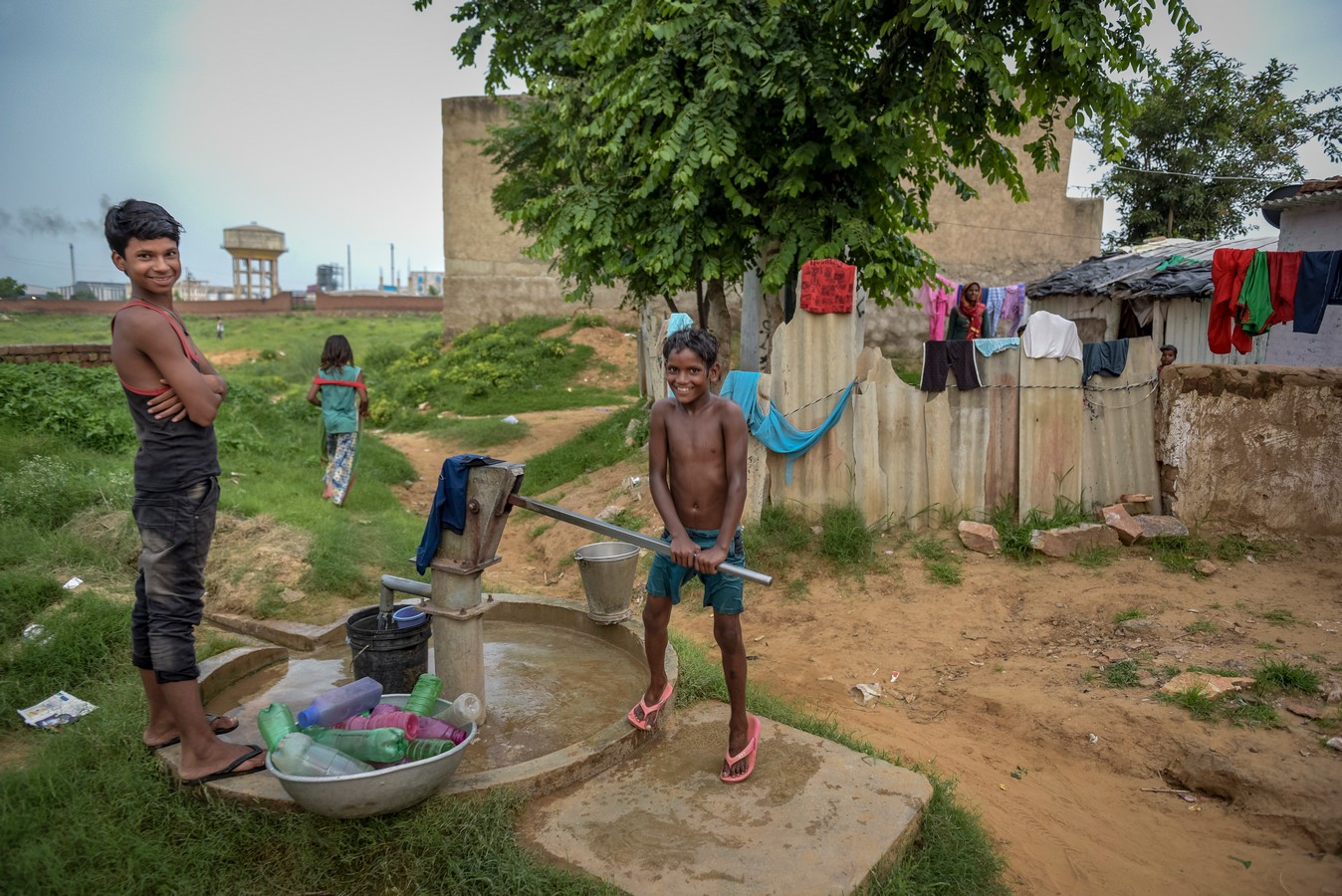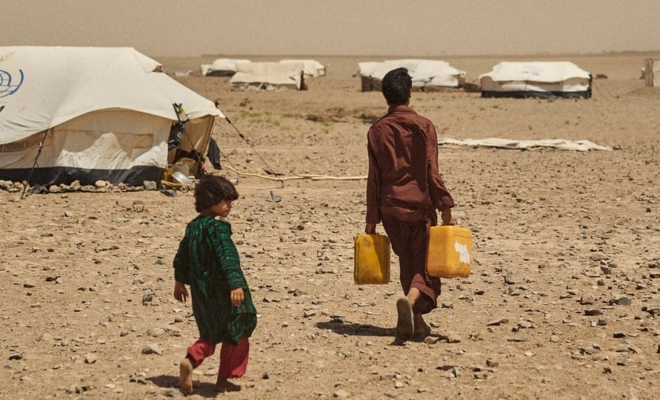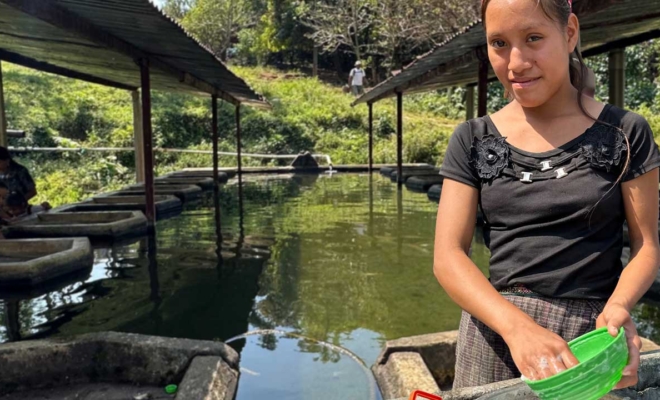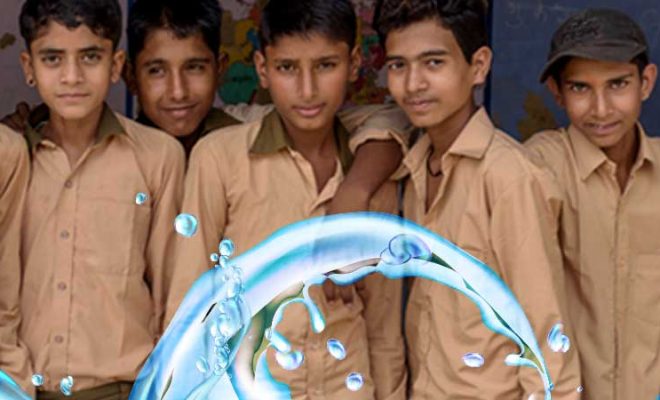“Industry” is a rough word in the water and sanitation world.
Throughout human history, water has been the quintessential natural resource. However, since the 18th century, successive industrial revolutions have made drinking water supply and wastewater treatment essential in reshaping human geography. The “water sector” gradually absorbed technological advances in hydraulics and chemistry, along with biological knowledge related to health. Even though water flows freely across the Earth, these advances are required to reach users reliably.

To achieve SDG 6, we still need to ensure access to safe drinking water for 703 million people and sanitation for 1.532 billion © Carlos Garriga /WAWF
The shortcomings of postcolonial industrialization
The leading countries of the Industrial Revolution used colonialism to secure cheap labor—enslaved until the mid-19th century—and raw materials. After World War II, newly independent countries embarked on uneven industrialization, often based on industrial and urban planning models from colonial powers, implemented without assessing their suitability for local realities and overlooking key cultural, geographical, and human differences.
This legacy still weighs heavily on many industrial sectors. Water and sanitation have created particularly complex problems. While cities expanded rapidly, rural areas remained marginalized. Infrastructure followed the logic of urban growth: centralized, complex, and costly networks primarily benefiting industrial and commercial centres. The result: metropolises with business districts and affluent neighbourhoods just kilometres away from informal settlements lacking basic water and sanitation, populated mostly by impoverished rural migrants.
Data for reflection
This structural imbalance has hindered the development of water, sanitation, and hygiene access in regions with widespread poverty. However, the imbalance is not the same in every postcolonial country. It depends on cultural, political, and climatic factors and demands solutions adapted to each context.
So far, international efforts have not achieved the expected results. If we look at the progress on SDG 6 since its launch in 2015, improvements are clear, but universal access to water and sanitation by 2030 appears increasingly out of reach. We are not advancing at the required pace, as acknowledged in the UN’s latest report, published last August.
According to the Joint Monitoring Programme (JMP) of WHO and UNICEF, 411 million people lack guaranteed access to safe drinking water. This figure includes 115 million who rely on surface water—rivers, ponds, or lakes—and 296 million whose water does not meet minimum safety standards.
Realistically, as the World Bank notes, we must add 292 million more who do not have water within a 30-minute round trip from home, regardless of its quality. That brings the total water access challenge to 703 million people; of these, 549 million live in rural areas, and about 154 million live in urban settings. This distinction matters as solutions vary significantly depending on the environment. In cities, those without access tend to live in informal settlements, where the lack of water and sanitation is inherent to slum conditions.
Sanitation data are even more concerning: 1.532 billion people lack access to safe sanitation. Among them, 418 million still practice open defecation, and 544 million use facilities that do not provide safe isolation from waste, exposing people to faecal contamination and polluting their environment.
Again, two different realities emerge: open defecation is primarily a rural issue, affecting 680 million people, while in urban areas, over 500 million live without toilets

According to the Joint Monitoring Programme (JMP) of WHO and UNICEF, 411 million people lack guaranteed access to safe drinking water. © Suraphat Nuea
The challenge of Water Industry 4.0
The scale of the challenge requires rethinking water and sanitation as a real industry—but not in the form it takes in developed countries. Each country must create a model tailored to its cultural, climatic, geographical, and economic context. The imported formula of centralized networks, costly infrastructure, and vertical urban development is neither technically nor financially viable in many parts of the Global South.
The alternative is to foster a decentralized, resilient water industry capable of operating at multiple scales and under various conditions.
In this context, the World Bank, through the Utility of the Future (UoF) program, has been promoting a progressive roadmap for transforming water access in low-income economies since 2020. The initiative began with a pilot phase—UoF 0.0—across utilities in eight countries and gradually evolved into more structured versions. Now, with the launch of Utility of the Future 4.0 in December, the program takes a significant turn, encouraging water and sanitation providers in developing countries to design their own roadmaps.
The goal is not to replicate models from high-income economies but to build local capacity and promote contextualized solutions. The new approach emphasizes digitalization, climate resilience, and energy efficiency, while also promoting private sector partnerships and the participation of small communities.
However, the structural root problem remains: lack of funding. Public water utilities in the poorest countries still face extremely limited access to credit. Funding is insufficient, official development assistance flows are declining, and prospects are dim, given the progressive withdrawal of the United States from multilateral commitments. On top of this is the uncertainty surrounding instruments like the Loss and Damage Fund, created at COP27 but still without tangible outcomes.
In this scenario, UoF 4.0 aims to offer a systemic framework to facilitate the necessary public-private partnerships, which are essential to prevent the exclusion of the most vulnerable and ensure that access to water remains a human right, not a commodity.
UoF 4.0 is no magic solution—but it provides a realistic foundation for progress. What it does require, however, is decisive political action. The problem is not only technical or financial; it is one of political will and vision.
At the current pace, by 2030, 2 billion people will still lack safely managed drinking water, and water stress will remain a growing concern: in 2021, the global average reached 18.6%, with alarming levels in Central and South Asia and critical conditions in North Africa. We need a new water industry. There is no time to lose.





